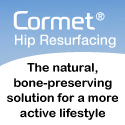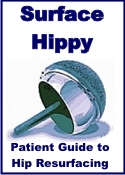|
KNEE ARTHROSCOPY
Knee arthroscopy is surgical procedure in which a small camera is used to
examine tissues inside the knee joint. Additional instruments may be inserted to
repair the knee.
Alternative Names: Knee scope - arthroscopic lateral retinacular
release; Synovectomy; Patellar debridement
Arthroscopic surgery on the knee involves inserting a small camera, less than
1/4 inch in diameter, into the knee joint through a small incision. The camera
is attached to a video monitor, which the surgeon uses to see inside the knee.
In some facilities, the patient can choose to watch the surgery on the monitor
as well.
For a simple surgical procedure, a local or regional anesthetic is administered,
which numbs the affected area. The patient remains awake and able to respond.
For more extensive surgery, general anesthesia may be used. In this case the
patient is unconscious and pain-free.
After the camera is inserted, saline is pumped in under pressure to expand the
joint and to help control bleeding. Some surgeons also use a tourniquet to
prevent bleeding.
After looking around the entire knee for problem areas, the surgeon will usually
make 1-4 additional small incisions to insert other instruments. Commonly used
instruments include a blunt hook to pull on various tissues, a shaver to remove
damaged or unwanted soft tissues, and a burr to remove bone. A heat probe may
also be used to remove inflammation (synovitis) in the joint.
At the completion of the surgery, the saline is drained from the knee, the
incisions closed, and a dressing applied. Many surgeons take pictures of the
procedure from the video monitor to allow the patient to see what was done.
Arthroscopy is much less traumatic to the muscles, ligaments, and tissues
than the traditional method of surgically opening the knee with long incisions (arthrotomy).
The benefits of arthroscopy involve smaller incisions, faster healing, a more
rapid recovery, and less scarring. Arthroscopic surgical procedures are often
performed on an outpatient basis and the patient is able to return home on the
same day.
Arthroscopy may be recommended for knee problems, such as:
A torn meniscus (either repair or remove)
Mild arthritis
Loose bodies (small pieces of broken cartilage) in the knee joint
A torn or damaged anterior cruciate or posterior cruciate ligament
Inflamed or damaged lining of the joint (synovium)
Misalignment of the knee cap (patella)
|




